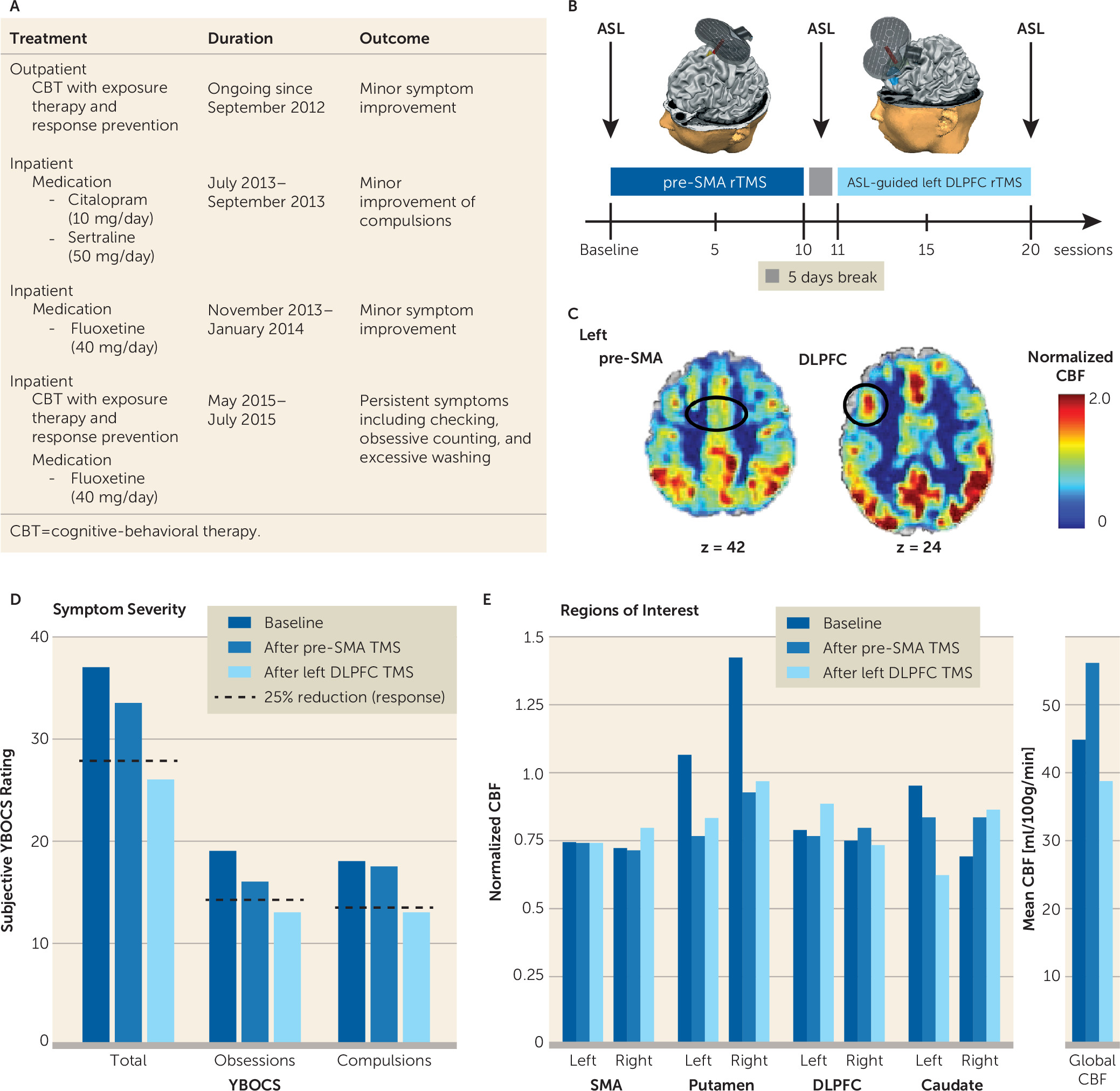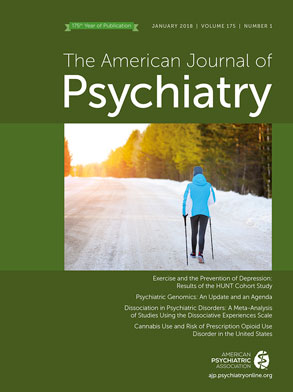T
o the E
ditor: In May 2015, a 27-year-old man was referred to our hospital because of treatment-resistant obsessive-compulsive disorder (OCD), from which he had suffered since age 12. He had undergone first-line treatment including cognitive-behavioral therapy together with different selective serotonin reuptake inhibitors (
Figure 1A). However, despite adequate treatment dosages, OCD symptoms remained severe (
Figure 1).
For augmentation purposes, repetitive transcranial magnetic stimulation (rTMS) has been suggested, although previous results concerning outcome, stimulation site, and TMS protocols have been inconsistent (
2). In OCD, rTMS is administered to target cortical regions, such as the presupplementary motor area and the dorsolateral prefrontal cortex (DLPFC) (
2), which are connected to hyperactive subcortical components of the cortico-striato-thalamo-cortical circuitry. Because most recent results of low-frequency rTMS over the presupplementary motor area have been promising (
3), we stimulated this region for 10 sessions with a fluid-cooled 70-mm figure-8 coil and 1-Hz and 20-minute trains (1,200 pulses/day) at 100% of resting motor threshold. However, symptom reduction was only modest after the treatment (
Figure 1D), and arterial spin labeling (ASL), a noninvasive neuroimaging technique that measures cerebral blood flow (CBF), revealed hyperperfusion in areas related to cortico-striato-thalamo-cortical circuitry such as the left DLPFC after rTMS of the presupplementary motor area. Therefore, another 10 sessions of rTMS were applied over the left DLPFC, a target region that also has shown promise in previous studies but has never been targeted using ASL-guided neuronavigation (
2). In a second treatment series, we thus used ASL-guided rTMS over the left DLPFC allowing optimal localization and online monitoring of the coil’s position, applying the same stimulation parameters as in our first treatment. Medication remained stable the 2 weeks before and during the intervention. Assessment following left DLPFC rTMS showed a more convincing clinical reduction on the Yale-Brown Obsessive Compulsive Scale and CBF decrease in the left caudate nucleus, which is structurally connected to the left DLPFC. This result suggests a specific neurobiological effect of rTMS especially over the left DLPFC on the cortico-striato-thalamo-cortical circuitry (
Figure 1B through 1E).
To our knowledge, this case report, a retrospective analysis of rTMS treatment administered as part of routine clinical care, is the first to use ASL-guided rTMS over the left DLPFC in OCD. By providing a quantitative index of CBF during a brief and noninvasive resting state measurement, ASL might be well-suited for clinical applications involving rTMS. Although we found reduced symptom severity and CBF in OCD-related regions, we cannot rule out possible carry-on effects of the proceeding presupplementary motor area rTMS because of the uncontrolled design of the study. Therefore, further research is required to determine the optimal stimulation site and duration.


